Hasura explore
Hasura appeared to offer a promising solution for reducing time to market. In this repository, we are experimenting with Hasura to assess its potential. To do so we create a small blog application with roles and permissions.
POC Requirements
General
- POC is a small blog
- There are two roles writer and editor
- There should be admin ui for editors and writers
Writers
- Writers can create article
- Writers can edit their own articles
- Writers cannot edit status field of articles
- Writers cannot delete articles
- Writers can list / read articles
Guests
- Guest users can read articles with their author
Editors
- Editors have full access to articles.
Admin
- The backend api and hasura console interacts with hasura with using admin role.
- Admin has full access to every resource.
Authentication
- Signup and login are handled via custom actions
- Signup and login requests are proxied to backend server
- Backend server created jwt in format that hasura understands
- After login / signup hasura performs authentication / authorization using jwt
- Signup is only available from hasura console
- Login is available through admin ui.
Backend server
- Its written in typescript + express.
- It provided webhooks that hasura invokes for handling actions.
- Its uses urql graphql client to interact with the hasura server.
- It handles hasura errors.
- Uses graphql codegen to autogenerate types.
Admin ui
- Offers login and crud for articles.
- It handles hasura errors.
- Uses graphql codegen to autogenerate types.
Getting Started
Screenshots
 Login Login |
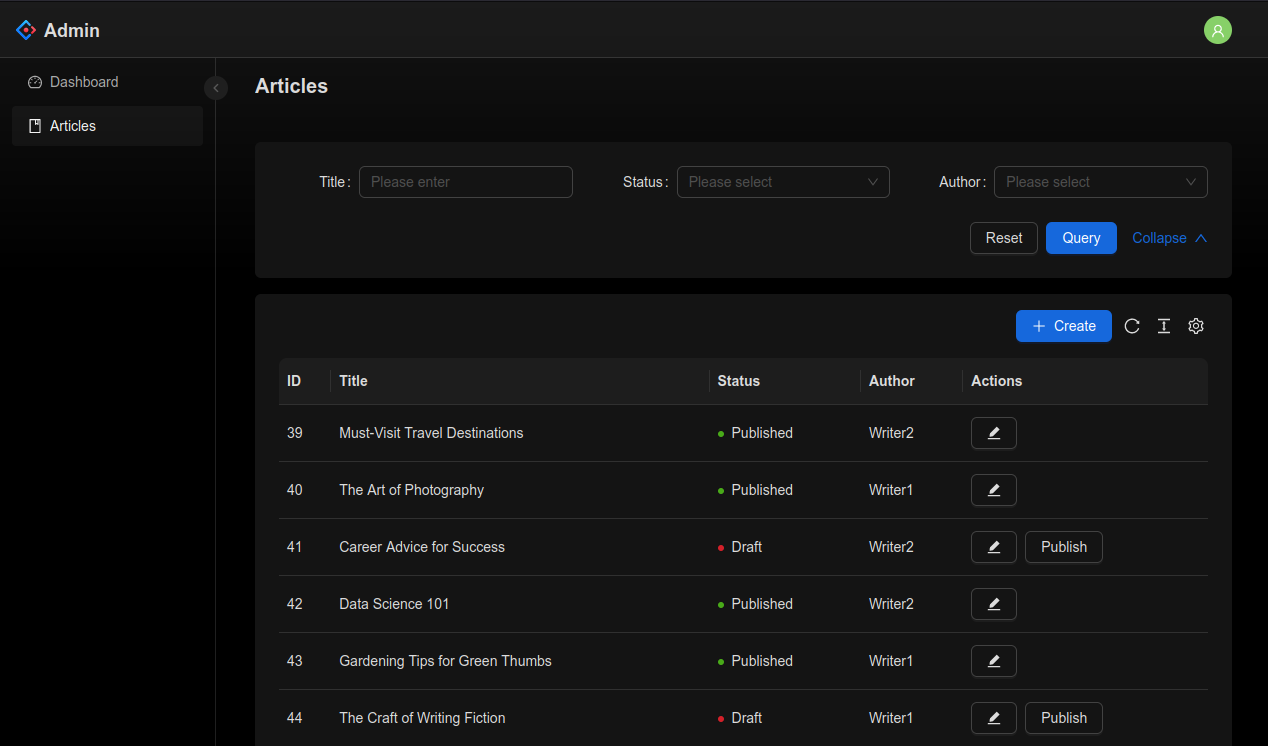 CRUD CRUD |
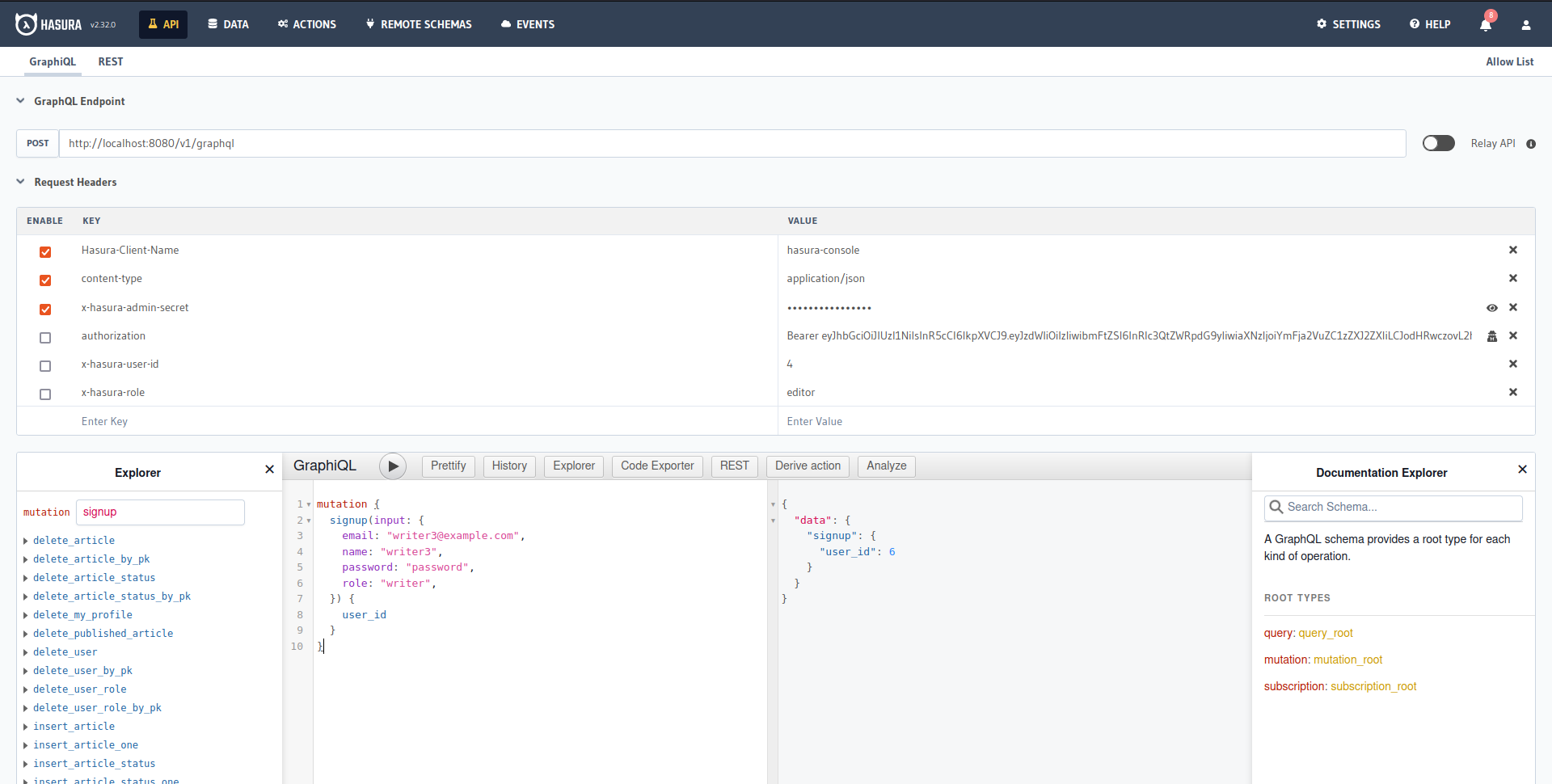 GraphQL API GraphQL API |
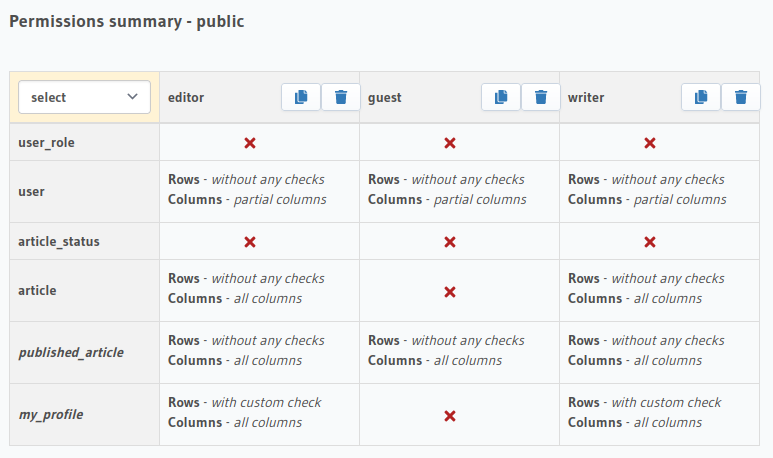 Permissions Summary Permissions Summary |
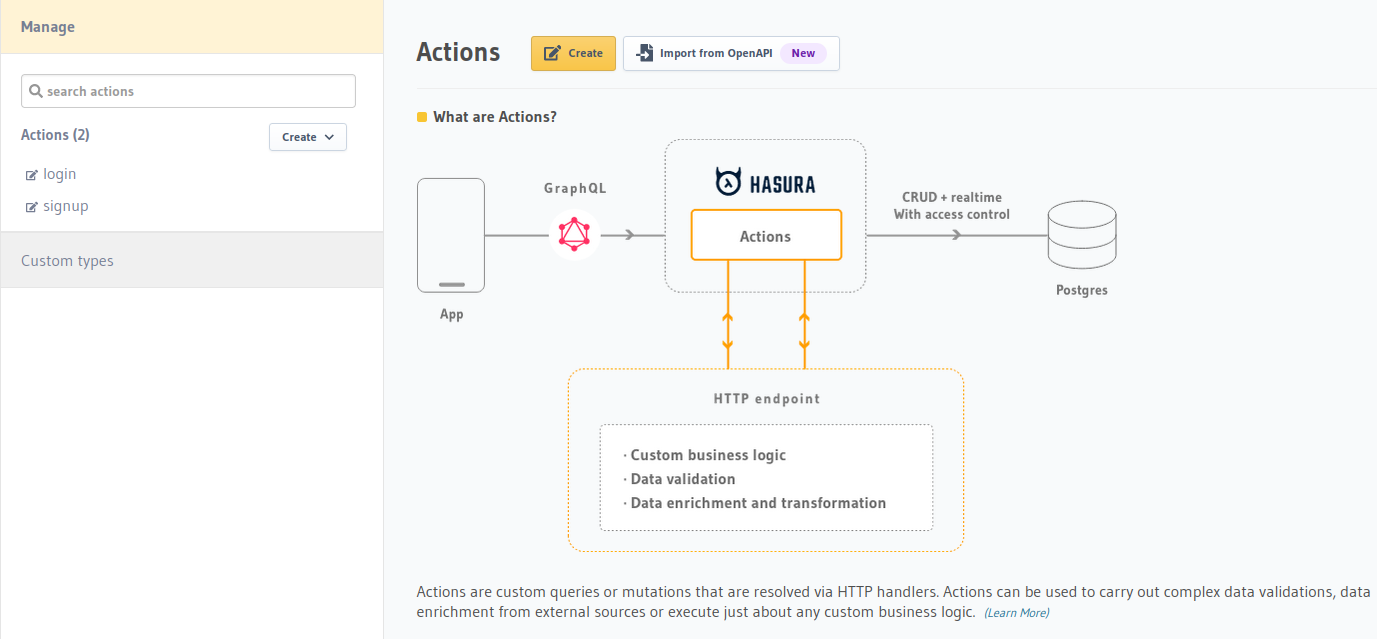 Custom Actions Custom Actions |
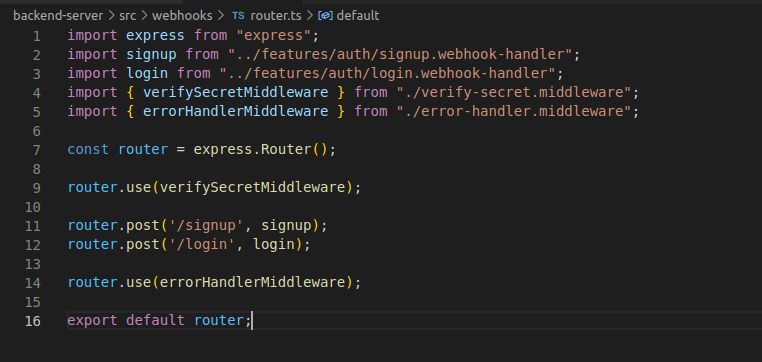 Action Handlers Action Handlers |
Pros
- It's basically a GraphQL to SQL compiler.
- Lets us develop a GraphQL API very quickly.
- Rich permissions model. Can easily handle complex permission requirements, even complex permissions for multi-tenant software can be handled easily.
- For things that Hasura cannot do out of the box, such as integrating with third-party APIs, etc., it's very easy to write custom webhook handlers.
- Can trigger webhooks on insert, delete, update. This can be very useful for modeling async flows.
- Modeling relationships between entities is very easy.
- Can query data not only from tables but also from views.
Cons
- It maps one-to-one with your database models, although database views can solve this problem, but for many applications, API models don't directly map to database models.
- If your data model has a lot of computed fields, Hasura is probably the wrong choice. Think of something like e-commerce with multi-currency support.
- Error handling feels inconvenient. It's not a Hasura problem; it's a GraphQL problem. But since we have no control over how Hasura formats errors, error handling code on the client becomes complicated.
- The enums you have in Hasura cannot be used as input to custom actions.
- There is a lot more code on the frontend, such as code generation, fragments, etc.